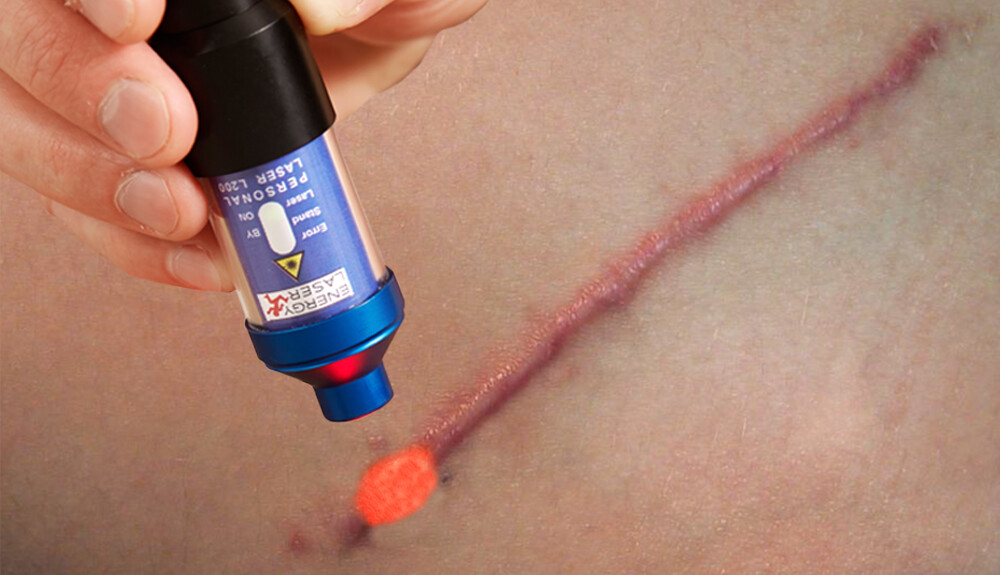A keloid is a scar tissue that protrudes from the skin surface and exceeds the size of the wound, resulting from abnormal wound healing. It usually has a dark reddish-purplish-brownish colour, different from the skin colour.
Keloid can start from any skin lesion. For example, acne, insect bite, injection site, skin puncture from a body piercing, hair removal, tattoo, accidental wound or even surgical incision.
Keloid is a wound healing disorder, abnormally high amounts of collagen are produced. The cause is not fully understood, but disturbance of the microcirculation around the wound, loss of mitochondrial health (cellular energy production disturbance and consequent protein synthesis problem) are involved.
Cheloid is non-harmful, non-infectious and has nothing to do with tumours.
Mostly cosmetic – it is very conspicuous because of its colour – it bothers the affected person.
However, the thick and hard keloid that forms near the joints can even hinder movement.
Surgically removed keloids recur in 50-60% of cases. Therefore, excision is usually only attempted for “good cause”.
Soft laser and keloid
Soft laser treatment can prevent keloids. When dealing with acne, injury, or surgical incisions, you should promptly treat the affected area of skin. Perform the treatment methodically, applying 5-8 Joules of energy. Persistent treatment can reduce the thickness and hardness of the keloid and fade its color. Since scar remodelling is a process that takes months, you need a minimum of 3 to 4 months of treatment, with daily sessions every other day at most.
Soft laser treatment points
Keloids can be treated with high-energy, point laser beam emitting devices in laser class 3, such as the Personal-Laser L400 and the Energy-Laser L500 Pro.
[message title=”Personal Laser L400 soft laser” title_color=”#ffffff” title_bg=”#1e73be” title_icon=”” content_color=”#000000″ content_bg=”#ededed” id=””]
 Laser power class 3
Laser power class 3- 808 nanometer laser beam
- CW (continuous wave) laser
- 400 mW power
- 12.5 sec / 5 Joule
[/message]
[message title=”EnergyLaser L500 Pro Bluetooth Soft Laser” title_color=”#ffffff” title_bg=”#1e73be” title_icon=”” content_color=”#000000″ content_bg=”#ededed” id=””]
- Laser power class 3

- 808 nanometer laser beam
- CW (continuous wave) laser
- 500 mW power
- 10 sec / 5 Joule
- Android app – Bluetooth connection
[/message]
The laser source should be held 0.5-1 cm from the skin, perpendicular to the keloid, for 10 seconds.
The first treatment point is one end of the scar.
When the device beeps (10 seconds have elapsed), the laser beam is moved 1 cm further above the scar.
At each point (without moving) wait for the 10 seconds to elapse. You will soon be finished.
If the keloid is very thick, hard, almost pencil thick, then instead of 10 seconds (and 1 beep), use twice as much treatment time (20mp, 2 beeps/point).
The proposed devices are high energy devices. Even in the proposed 10-20 seconds, they deliver enough energy to the skin for the biostimulation to be effective.
Less and more time is not sufficient. Less is ineffective and more is not necessary, in fact biostimulation stops.
Believe me, such short time is enough!
But you should also know that laser light is not effective! The light causes biostimulation, which means that the natural regeneration of scar tissue (the rebuilding of connective tissue fibres that are dying) is enhanced by the treatment. Since the destruction and regeneration of fibres does not happen all at once in the scar, but over a period of 3-6 months, you can expect nothing at all from a single treatment.
For a minimum of 4 to 5 months, persevere with the treatment to get meaningful results.
What could be the result? The keloid does not disappear, but thins, softens and fades.
